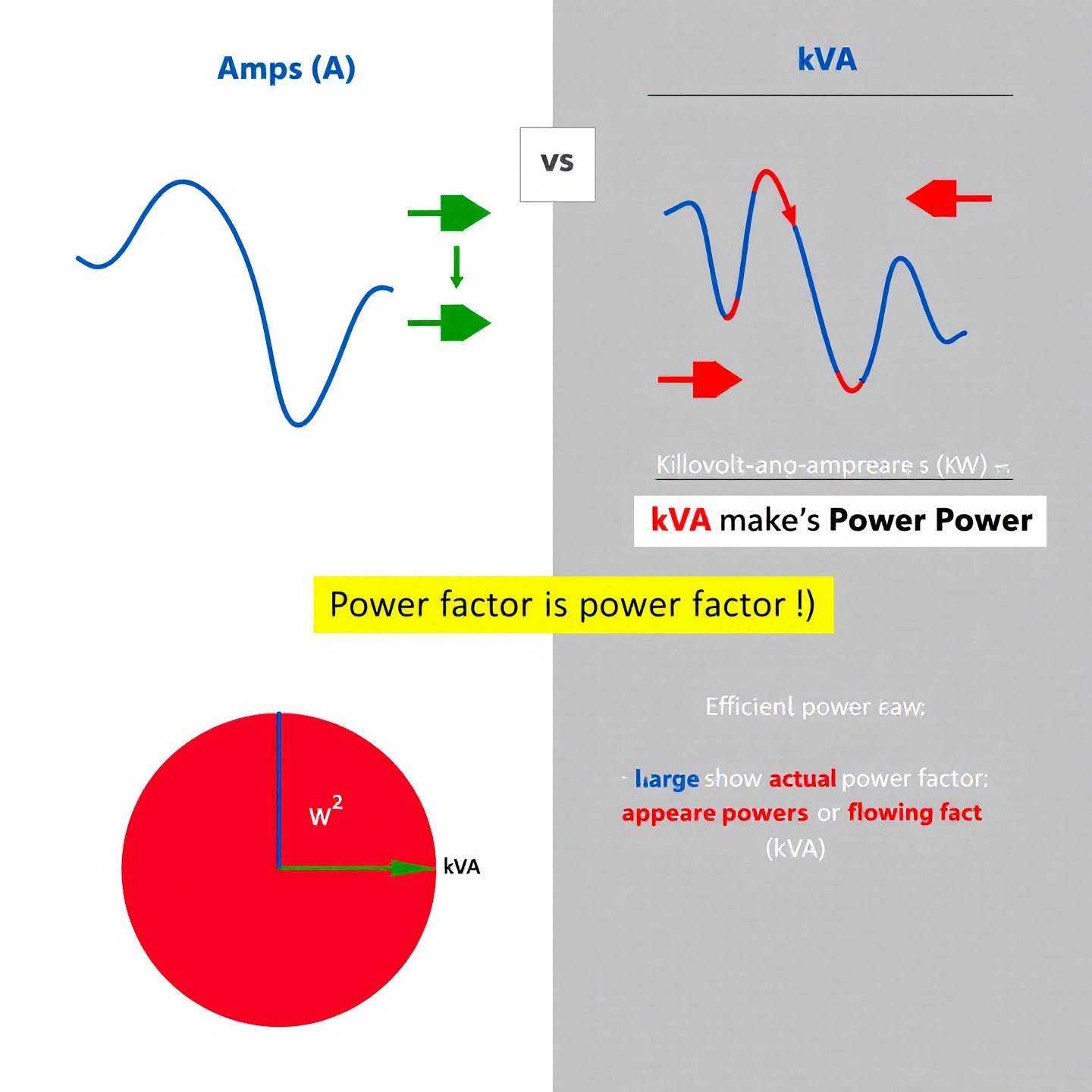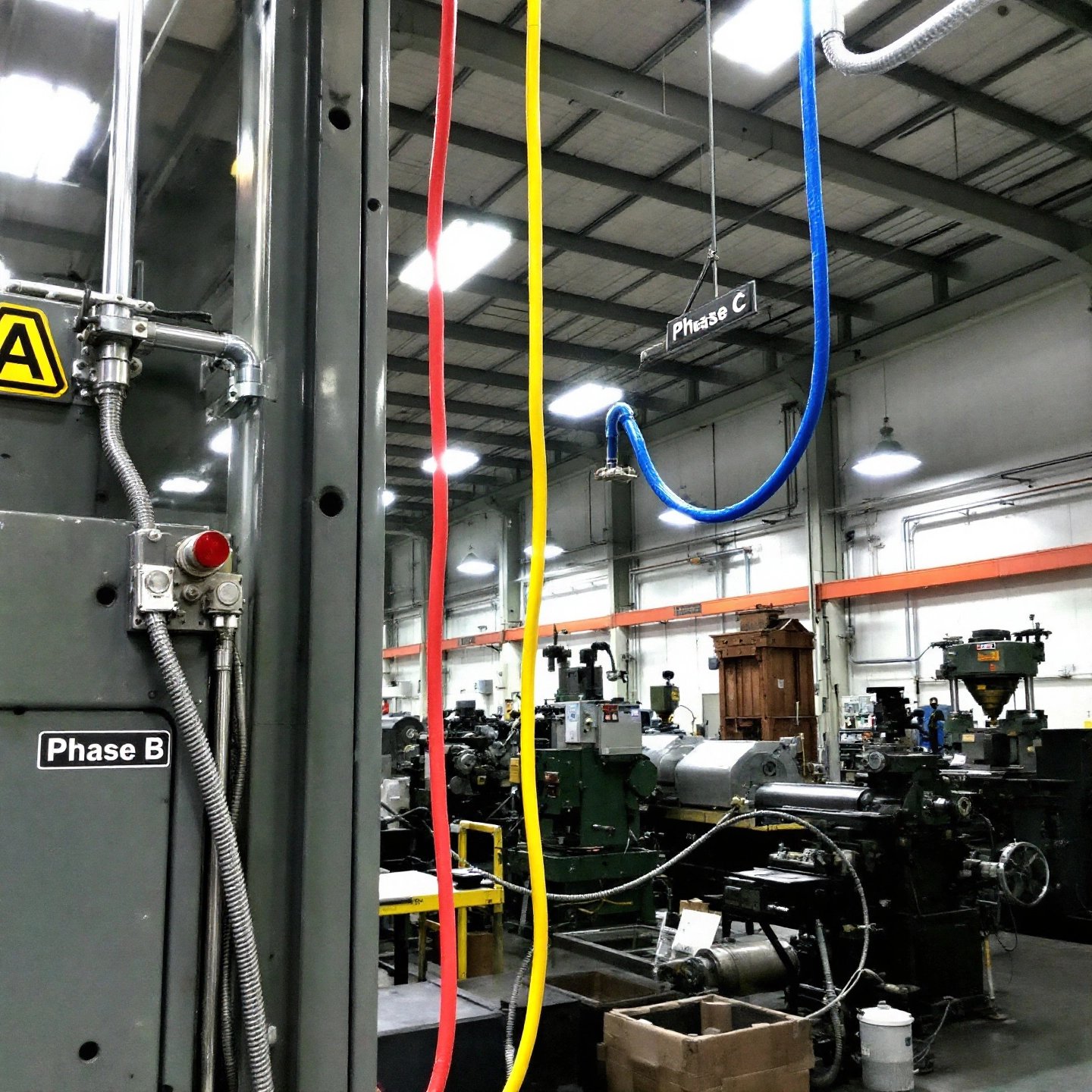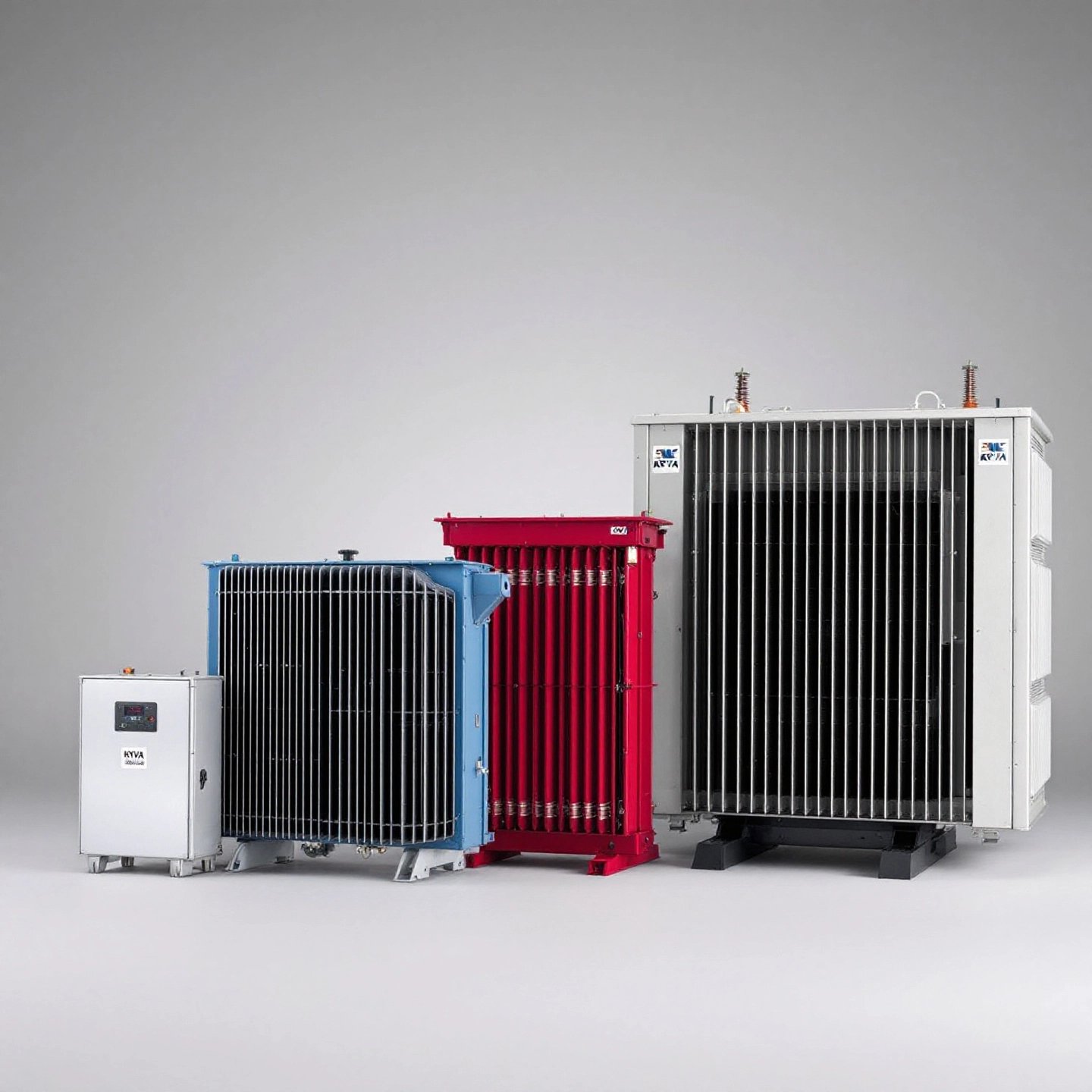Introduction to Amps to KVA
In the realm of electrical engineering and power management, understanding the conversion from amps to kVA is essential. This conversion is not just a theoretical exercise; it plays a crucial role in electrical power calculations that impact everything from designing circuits to selecting appropriate equipment. When you think about it, converting amps to kVA helps ensure that electrical systems operate efficiently and safely, preventing issues like overloads or equipment failures.
But why is this conversion so significant? Amps measure the flow of electrical current, while kVA, or kilovolt-amperes, measures apparent power, which includes both active and reactive power in an electrical system. This distinction is vital because it affects how we design and manage electrical systems, especially in scenarios where power factor plays a role. Power factor, the ratio of real power (kW) to apparent power (kVA), influences the efficiency of power usage and distribution.
For both professionals and DIY enthusiasts, mastering amps to kVA conversion is invaluable. It aids in selecting the right transformers, circuit breakers, and generators, ensuring they are appropriately sized for the load they need to handle. Imagine setting up a home workshop or managing a small business; knowing how to convert amps to kVA can help you avoid costly mistakes and optimize energy use.
Throughout this article, we’ll delve into the practical applications of amps to kVA conversion, explore step-by-step methods for different systems, and introduce essential tools like calculators and charts to streamline the process. Whether you’re an engineer, electrician, or a curious DIYer, understanding these conversions can empower you to make informed decisions about your electrical setups.

Understanding Key Differences Between Amps and KVA
At first glance, amps and kVA might seem like two sides of the same coin, both integral to understanding electrical systems. However, these units measure different aspects of electricity, and knowing how to convert amps to kVA is crucial for effective power management. Let’s break down these differences and explore how they relate in practical scenarios.
Amps, short for amperes, measure the flow of electrical current in a circuit. Imagine electricity flowing like water through a pipe; amps would be akin to the volume of water passing through per second. In contrast, kVA, or kilovolt-amperes, measures apparent power, which combines both active (real) and reactive power in an electrical system. This is akin to considering not just the water flow but also the pressure pushing it through the pipe.
Basic Conversion Formulas
To convert amps to kVA, we need the circuit’s voltage. For a single-phase system, the formula is straightforward: kVA = (E × I) ÷ 1000, where E is the voltage in volts, and I is the current in amps. For instance, if you have a 240V circuit with a current of 20 amps, the apparent power is (240V × 20A) ÷ 1000 = 4.8 kVA.
In three-phase systems, the conversion accounts for the phase angle, using the formula: kVA = (E × I × √3) ÷ 1000. This accounts for the additional complexity in three-phase circuits, where the power factor plays a significant role.
The Role of Power Factor
The power factor, a critical component in these calculations, represents the efficiency of an electrical system. It is the ratio of real power (measured in kW) to apparent power (measured in kVA). A power factor closer to 1 indicates a more efficient system, where most of the power is used effectively. In real-world applications, understanding and adjusting the power factor can lead to significant energy savings and optimized equipment performance.
Appreciating these differences and knowing how to convert between amps and kVA is not just academic; it is vital for designing and managing electrical systems efficiently. As we continue, we’ll explore specific methods and tools to simplify these conversions, ensuring your electrical setups are both safe and effective.
Breaking Down Single-Phase Conversion Methods
When you dive into the world of electrical systems, converting amps to kVA in single-phase setups might seem daunting at first. Sounds complex? It doesn’t have to be. Let’s simplify the process with a step-by-step approach and explore how tools like an amps to kVA calculator can make life easier.
Step-by-Step Conversion Process
Imagine you’re setting up a home workshop and need to determine the power requirements for your equipment. The first step is understanding the formula: kVA = (Voltage in Volts × Current in Amperes) ÷ 1000. This formula is your gateway to converting amps to kVA in single-phase systems.
- Identify the Voltage: Start by identifying the voltage of your system. In many residential setups, this is often 120V or 240V.
- Measure the Current: Next, measure the current in amps that your equipment draws. This can be found in the equipment’s specifications.
- Apply the Formula: Plug these values into the formula. For instance, if your equipment operates at 240V and draws 10A, the calculation would be (240 × 10) ÷ 1000 = 2.4 kVA.
Leveraging Amps to KVA Calculators
While manual calculations are valuable, using an amps to kVA calculator can save time and reduce errors, especially when dealing with multiple devices. These calculators require you to input the current and voltage, instantly providing the kVA value. It’s a practical tool for both professionals and DIY enthusiasts to ensure accurate power planning.
Planning with Solar Panels
When it comes to single-phase systems, sourcing reliable power can be simplified with high-quality solar panels. Imagine setting up a solar-powered system; knowing your power conversion helps in selecting the right solar panel capacity. Companies like Renewable Energy Nexus offer a range of solar panels that can efficiently meet your energy needs, reducing your carbon footprint while ensuring sufficient power supply.
By mastering these conversion techniques, you’ll notice improved efficiency in your electrical setups, whether you’re powering a small workshop or planning a sustainable energy solution. As we move forward, we’ll explore tools and charts that further streamline these calculations, making power management more accessible and effective.
Using Charts and Calculators for Accurate Results
When it comes to converting kVA to amps, precision is key. Imagine having a reliable tool at your fingertips that simplifies this process, allowing you to focus on the bigger picture—efficient power management. This is where kVA to amps calculators and charts come into play, offering a streamlined approach to routine conversions.
Why Use Calculators?
Picture this: you’re working on a project that requires frequent conversions between kVA and amps. Manually calculating these values each time can be tedious and prone to errors. Enter the kVA to amps calculator, a tool designed to handle these conversions effortlessly. By inputting the apparent power in kVA and the voltage, you instantly receive the current in amps, saving you time and ensuring accuracy.
Understanding Conversion Charts
Charts are another invaluable resource, particularly for those who prefer visual aids. These charts, like the Generator KVA Rating to Amperage Conversion Chart, provide quick reference points for various voltage and kVA values. For example, if you know your system operates at 240V and your generator is rated at 25 kVA, the chart can quickly tell you the corresponding amperage without the need for calculations.
- Common Voltage Values: Charts often include standard voltage values such as 120V, 240V, and 480V, making it easy to find the information you need.
- Quick Reference: For professionals working in dynamic environments, these charts offer a quick way to verify calculations, ensuring that equipment is correctly powered.
Interpreting the Data
Using these tools effectively requires understanding how to interpret the data they provide. For instance, a kVA to amps chart will list the kVA values along one axis and the voltage values along another, with the intersection points indicating the amperage. This setup allows for quick cross-referencing, ensuring you can make informed decisions about your power requirements.
By integrating these calculators and charts into your workflow, you’ll find that power conversion becomes a hassle-free task. Whether you’re an electrical engineer or a DIY enthusiast, these resources are invaluable for maintaining efficiency and accuracy in your projects. Next, we’ll delve into the complexities of three-phase power systems, expanding our understanding of power conversion even further.

Exploring Three-Phase Power Fundamentals
When you think about electrical power systems, single-phase configurations might come to mind first. However, imagine a scenario where you need to power industrial machinery or large commercial buildings—this is where three-phase power systems shine. But what exactly sets them apart from single-phase systems?
Understanding Three-Phase Systems
Unlike single-phase systems that use two wires, three-phase systems employ three wires, each carrying an alternating current (AC) signal 120 degrees out of phase with the others. This configuration allows for a more stable and continuous power flow, which is crucial for high-load applications. According to Fluke, three-phase power is typically used in commercial and industrial settings due to its efficiency and ability to handle larger loads.
Key Differences: Single-Phase vs. Three-Phase
In a single-phase system, power delivery can experience peaks and dips, leading to less consistent power flow. In contrast, three-phase systems provide a steady power supply, reducing the risk of equipment damage and improving operational efficiency. For instance, a three-phase power system can transmit three times the power of a single-phase system while only requiring one additional wire, making it more material-efficient.
The Role of Power Factor and Phase Angle
When dealing with three-phase systems, the power factor and phase angle become significant. The power factor, the ratio of real power to apparent power, indicates how effectively electrical power is being used. A high power factor means more efficient power usage, which is essential for minimizing energy costs and optimizing system performance. The phase angle, represented by the cosine of the angle between voltage and current, also plays a role in these calculations.
To convert kVA to amps per phase in a three-phase system, understanding the power factor and phase angle is crucial. The formula for conversion, Amps per Phase (A) = Total Current (A) ÷ √3, helps determine how much current each phase carries, ensuring that systems are neither under nor over-utilized.
For those managing complex electrical systems, tools like the 3 phase transformer kVA to amps chart can provide quick insights into the relationships between voltage, current, and power factor, helping to streamline power management and enhance system reliability.
By grasping the fundamentals of three-phase power, you’ll be better equipped to handle the demands of various electrical applications, ensuring both efficiency and safety. As we continue, we’ll delve into advanced conversion techniques that further simplify these processes, making them accessible to both professionals and enthusiasts alike.
Mastering Advanced Conversion Techniques for Efficient Power Management
When it comes to optimizing electrical systems, mastering the conversion from kVA to amps is crucial. Sounds complex? Not with the right tools and techniques at your disposal. Let’s explore some advanced methods and tools that can simplify this process, ensuring accurate and efficient power management.
Advanced Tools for kVA to Amps Conversion
For those handling complex electrical systems, relying on advanced software solutions can be a game-changer. These tools not only automate the conversion process but also integrate seamlessly with existing systems to provide real-time data analysis. Imagine using a software that not only converts kVA to amps but also predicts potential overloads and suggests optimal load distribution strategies. Tools like these are indispensable for engineers managing large-scale projects or facilities.
One such tool is a comprehensive power management software that offers features like load forecasting, power factor correction, and energy efficiency analysis. By utilizing these advanced solutions, you can ensure that your electrical systems are not only efficient but also resilient to changes in demand.
Integrating Renewable Power Solutions
As we move towards more sustainable energy practices, integrating renewable power solutions becomes essential. Imagine a scenario where your power management system seamlessly incorporates solar energy, optimizing load management and reducing reliance on traditional power sources. Companies like Renewable Energy Nexus provide solar panels that can be integrated into your power system, offering a sustainable way to manage energy loads effectively.
By investing in high-quality solar panels, you not only enhance your system’s efficiency but also contribute to a greener future. These panels can be used in conjunction with advanced power management software to optimize energy usage, ensuring that your system remains efficient and sustainable.
Practical Applications and Benefits
Imagine you’re managing a facility with varying power demands throughout the day. Advanced conversion tools can help you allocate power more effectively, reducing waste and minimizing costs. By understanding the nuances of kVA to amps conversion, you’ll be better equipped to handle peak loads, prevent power outages, and ensure the smooth operation of your systems.
Moreover, integrating renewable energy solutions like solar panels can further enhance these benefits, providing a reliable and eco-friendly power source. This approach not only supports efficient load management but also aligns with global sustainability goals, making it a win-win for both your operations and the environment.
In conclusion, mastering advanced conversion techniques and leveraging modern tools can significantly improve your power management strategies. As we continue to explore the practical applications of these techniques, you’ll discover how they can be tailored to suit various scenarios, ensuring optimal performance and sustainability.

Applying KVA Ratings to Real-World Scenarios
Imagine you’re tasked with setting up an electrical system for a new project. Whether it’s a residential building, a bustling commercial space, or a large industrial facility, understanding how to apply kVA ratings is crucial for ensuring efficient and reliable power distribution. Let’s explore how different kVA ratings translate into practical applications across various settings.
Residential Applications: Comfort and Efficiency
In residential settings, the power needs are typically lower compared to commercial or industrial environments. A 15 kVA transformer, for instance, is often suitable for a large home or a small apartment complex. This capacity can comfortably handle essential household appliances like refrigerators, air conditioners, and lighting systems. To convert 15 kVA to amps, you can use the formula: Amps = (kVA × 1000) / Voltage. For a typical 240V home system, this equates to approximately 62.5 amps, ensuring that your home can operate smoothly without overloading the system.
Commercial Spaces: Balancing Demand and Supply
Commercial spaces such as offices, retail stores, and restaurants have higher power demands due to increased lighting, HVAC systems, and electronic equipment. A 100 kVA transformer is often deployed in such environments to manage these loads effectively. Converting 100 kVA to amps at 240V results in about 416.67 amps, providing ample capacity to support a wide range of equipment and ensure business continuity.
Industrial Applications: Powering Heavy Machinery
In industrial settings, the power requirements are significantly higher due to the presence of heavy machinery and production equipment. Here, transformers with ratings of 500 kVA or more are common. These transformers are designed to handle the substantial loads typical in manufacturing plants and processing facilities. By accurately calculating the required kVA and converting it to amps, industries can optimize their power distribution systems, reduce energy waste, and enhance operational efficiency.
For instance, a 500 kVA transformer operating at 480V would provide approximately 601 amps, a capacity that supports large-scale operations and complex electrical systems. This ensures that even during peak production times, the power supply remains stable, minimizing the risk of downtime or equipment failure.
Handling Varying Loads: Flexibility and Future-Proofing
One of the key considerations when applying kVA ratings is the ability to handle varying loads. In all settings, it’s important to account for potential future expansions or changes in power demand. By selecting a transformer with a slightly higher kVA rating than currently needed, you can ensure flexibility and accommodate any increase in load without needing immediate upgrades.
Moreover, incorporating load management strategies, such as load shifting or using energy-efficient devices, can further optimize power usage and reduce costs. These strategies allow for balancing power distribution during peak and off-peak times, enhancing the overall efficiency of the electrical system.
In conclusion, understanding and applying kVA ratings in real-world scenarios is crucial for designing effective and reliable electrical systems. Whether you’re managing a residential, commercial, or industrial project, knowing how to convert kVA to amps and handle varying loads can lead to significant improvements in energy efficiency and system reliability. As you continue to explore power conversion techniques, remember that the right transformer selection and load management strategies are key to achieving optimal performance.

Comparing Various Transformer Capacities
When it comes to electrical systems, selecting the right transformer capacity is pivotal. Sounds complex? It doesn’t have to be! Understanding how different transformers convert amps to kVA and vice versa can demystify the process, especially when considering the impact of load types on sizing. Let’s dive into how transformers are sized and rated, and how to effectively use a convert kVA to amps calculator for precise calculations.
How Transformers Handle Conversion
Transformers are essential for converting electrical power from one voltage level to another, facilitating efficient power distribution. The conversion of amps to kVA or vice versa is influenced by the transformer’s capacity and the type of load it serves. For instance, a transformer’s power rating, expressed in kilovolt-amperes (kVA), indicates its maximum power handling capability without exceeding temperature and insulation limits.
According to Daelim, transformers are sized based on their voltage, current, power, frequency, and temperature ratings. The voltage rating determines the maximum voltage a transformer can handle, while the current rating specifies the maximum current it can manage without overheating. Understanding these ratings is crucial for ensuring that the transformer can handle the expected load efficiently.
Load Type and Transformer Sizing
The type of load significantly affects transformer sizing. For example, a transformer in an industrial setting might need to handle both single-phase and three-phase loads. In such cases, the largest phase load determines the transformer’s size, ensuring it can accommodate peak demands without risk of overload. This principle is especially important in systems with mixed loads, where balancing is key to avoiding undersized or oversized transformers.
In residential or commercial applications, where loads might vary widely, selecting a transformer with a slightly higher kVA rating than currently needed allows for future expansion. This flexibility ensures the system can adapt to changes in power demand without immediate upgrades.
Comparing Transformer Capacities
Transformers come in a variety of capacities, from small units like 15 kVA for residential use to large industrial transformers exceeding 500 kVA. Each capacity serves different needs and applications:
- Small Transformers: Ideal for residential or light commercial use, these transformers handle lower power demands efficiently.
- Medium Transformers: Suitable for larger commercial spaces, these units balance higher power needs with efficiency.
- Large Transformers: Designed for industrial applications, they manage substantial loads and ensure stability in high-demand environments.
Using a convert kVA to amps calculator can simplify the process of determining the appropriate transformer size, ensuring that it meets the specific demands of the application. By inputting the kVA rating and system voltage, the calculator provides the necessary current capacity, helping you make informed decisions about transformer selection.
In conclusion, understanding the intricacies of transformer capacities and their conversion capabilities is essential for efficient power management. By considering load types and using reliable tools, you can ensure that your electrical systems are both effective and adaptable to future needs. As we move forward, we’ll explore best practices for streamlined electrical calculations, ensuring precision and efficiency in all your power management endeavors.
Best Practices for Streamlined Electrical Calculations
In the realm of electrical engineering, efficient conversions from amps to kVA are crucial for ensuring optimal power management. But how can you streamline these calculations for precision and ease? Let’s delve into some best practices that can simplify this process, making it accessible to both professionals and enthusiasts alike.
Embrace the Power of Modern Tools
Imagine having a toolbox filled with advanced tools designed to simplify your electrical calculations. Embracing modern amps to kVA tools and software can significantly enhance accuracy and efficiency. These tools automate complex calculations, allowing you to focus on more strategic aspects of power management. For instance, apps like Ugly’s Electrical References offer interactive calculators and up-to-date reference charts, providing quick and reliable results.
Regularly Update Reference Charts
Reference charts are invaluable for quick conversions, but they must be current to ensure accuracy. Regularly updating these charts to reflect the latest standards and voltage levels is essential. Consider integrating digital versions that can be easily updated and accessed, ensuring you always have the most accurate data at your fingertips. This practice not only saves time but also enhances the reliability of your calculations.
Leverage Software for Complex Systems
When dealing with intricate electrical systems, manual calculations can become cumbersome and error-prone. Leveraging advanced software solutions can streamline these processes, offering features like load forecasting and power factor analysis. Such software provides a comprehensive view of your electrical system, helping you make informed decisions about load distribution and energy efficiency.
Adopt a Systematic Approach
Consistency is key in electrical calculations. Adopting a systematic approach ensures that each step is followed meticulously, reducing the chance of errors. Whether you’re using manual methods or advanced software, a structured process helps maintain accuracy and efficiency. This approach is particularly beneficial when managing large-scale projects where precision is paramount.
By incorporating these best practices into your workflow, you’ll find that electrical calculations become more manageable and precise. As you continue to explore power conversion techniques, remember that using the right tools and maintaining up-to-date resources are critical components of effective power management. As we wrap up this exploration, the next section will recap the importance of accurate conversions for efficient power usage and safety.
Conclusion
Imagine setting up an electrical system without knowing the precise power requirements—sounds risky, right? Accurate amps to kVA conversions are not just a matter of convenience; they are vital for ensuring efficient power usage and safety across various applications. Whether you’re managing a small residential setup or a large industrial facility, understanding these conversions helps optimize energy consumption, prevent overloads, and maintain system reliability.
Why emphasize amps to kVA efficiency? It’s simple: efficient power management translates into cost savings and enhanced system performance. By accurately converting amps to kVA, you ensure that your electrical systems operate within their designed capacities, reducing the risk of equipment failure and extending the lifespan of your infrastructure. This precision is especially crucial in environments where power demands fluctuate, such as in industrial settings where machinery loads vary.
Moreover, accurate conversions contribute to power conversion safety. Improper calculations can lead to overheating, short circuits, or even electrical fires, posing significant safety hazards. By mastering these conversions, you safeguard not only your equipment but also the people and processes that rely on it.
To further enhance your power management strategies, consider exploring additional resources and tools. For instance, companies like Renewable Energy Nexus offer high-quality solar panels that integrate seamlessly into your power systems, providing sustainable and reliable energy solutions. Investing in such equipment not only supports efficient load management but also aligns with global sustainability goals.
In conclusion, mastering amps to kVA conversions is a cornerstone of effective power management. By leveraging the right tools and resources, you can ensure that your electrical systems are both efficient and safe. As you continue to explore the world of power conversion, remember that precision and accuracy are your best allies in achieving optimal performance and sustainability.
Amps to KVA Conversion FAQs
1. How do I convert amps to kVA?
To convert amps to kVA, multiply the current in amps by the voltage, then divide by 1000. For single-phase systems, use kVA = (Volts × Amps) ÷ 1000. For three-phase systems, include the square root of three in the formula: kVA = (Volts × Amps × √3) ÷ 1000.
2. How many amps is a 1kVA?
The number of amps in 1 kVA depends on the voltage. For a 240V system, 1 kVA equals approximately 4.17 amps. This value changes with different voltages, so always adjust calculations based on your specific voltage.
3. What is the importance of power factor in kVA calculations?
Power factor, the ratio of real power to apparent power, affects the efficiency of electrical systems. A higher power factor indicates better efficiency, reducing energy waste and improving system performance.
4. Why use a kVA to amps calculator?
A kVA to amps calculator simplifies conversions by providing quick results, ensuring accuracy and saving time, especially when dealing with complex systems or frequent calculations.
5. What are the benefits of using solar panels from Renewable Energy Nexus?
Renewable Energy Nexus offers high-quality solar panels that integrate seamlessly with power systems, providing sustainable energy solutions that reduce carbon footprints and improve load management efficiency.



